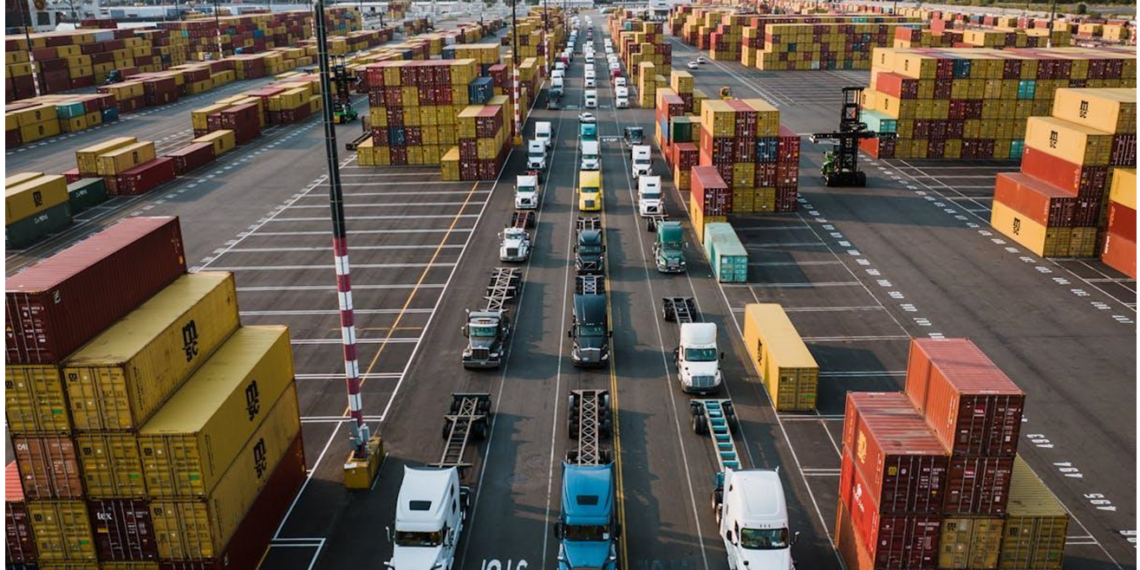From raw materials extraction to delivery of finished products to our doorsteps, a transportation network ensures everything reaches the right place at the right time.
Transportation lies at the core of the complex supply chain management network and serves as the critical link that ties every cycle step together.
This article examines the importance of transportation in supply chain management, illustrating its effects on efficiency, costs, and customer satisfaction.
Three Pillars of Effective Supply Chain
Think of a well-oiled conveyor belt. It is what a smoothly running supply chain looks like. Three key components work together seamlessly to keep goods flowing: procurement, production, and logistics. All these stages are complex, and you must do your best to get all the materials to reach the finish line: happy customers.
1. Procurement: Staging Success from the Start
The function of procurement is equivalent to the role of a foundation in a building – it creates a primary platform for everything that comes afterward. Here, critical decisions are made about what you should construct your product with. Engaging suitable suppliers and figuring out good deals depend on your entire supply chain’s quality, cost, and reliability. Choosing the right potential partners from the start guarantees that the later journey will be smoother.
2. Production: The Machine of Productivity
Materials are the next in line. Finally, production makes the process work as it moves along.
This phase includes decisions like how many to produce and what amount should be stored.
It’s a balancing act: meet demand but not over-produce; instead, have underground or open storage facilities ready. Efficient production keeps products available and contributes to savings in the cost chain.
3. Logistics: A Link Between Stages
Logistics can be seen as the backbone of the entire process. It encompasses all the stages of shipping goods to your customers.
Creating a comprehensive logistics chain is a collaborative process between how components are shipped in (inbound) and manufactured products are shipped out (outbound). Picking up the right logistics service providers and route planning leads to timeliness and cost-effectiveness of cargo transportation lists within this strategy.
Maximize Efficiency for Success
Efficient transportation management is one factor that makes the supply chain highly effective. Here are some key ways transportation contributes to a streamlined operation.
Instant Results and Better Stock Management
The selection process of advanced mode and precise route optimization will have a vital impact on the lead time shortening.
It means fast shipments, high customer satisfaction, and readiness to take action when changes are detected in the market. Moreover, a quicker and more convenient transport system allows for a favorable just-in-time inventory management system. Through this, we save space for the inventory and avoid stock-out or old inventory obsolescence.
Expenditure and Technical Progress
The transportation activity constitutes a large portion of the total logistics cost of stock expenditure. It means that route optimization, right vehicle choice based on load type, and budget-friendly warehouses for storage can all be combined to result in a massive cost reduction.
Besides that, an intelligent logistics management software can be used to deliver functionality beyond the basics for the systems to succeed. The software can also manage the trial times in real time, providing vital data analysis for optimal operation and correct decision-making.
Dangers and Strategies to Ensure a Safe Trip
The future route map of global logistics will have several hurdles. While the managers are busy maintaining the flow of commodities and avoiding hindrances, certain risks hinder smooth work. Here is a rundown of a few basic barriers:
i. Cybersecurity Concerns
Improvements in technology might be good, bad, or ugly. Along with automation and connected sensors, the industry model will face a new generation of cyberattacks. Attackers who plan to operate from the network level can disrupt operations. Installing solid security measures and providing driver training are vital to tackling this problem.
ii. Driver Shortage
This shortage will likely linger, and the American Trucking Association‘s prognosis is that the figure will go beyond 160,000 by 2028. The retirement rates would not be so high for the older workforce as the average trucker is 46, and the replacements might not work. But it would intensify the workload for the other drivers and would ultimately cause tiredness and car crashes.
iii. Deteriorating Infrastructure
The primary hazards every country suffers today are bridges crumbling, railways over-capacity, and congested airspace networks.
A delay due to infrastructure problems can result in additional fuel consumption and vehicle wear and tear, forcing more scheduled repairs.
As a standalone process, transportation is quite complex. Notwithstanding, it plays a crucial role in an efficient supply chain.
Fortunately, businesses can roll out efficient, cheap, and environmentally sustainable first, middle, and last-mile deliveries by identifying associated problems before they present themselves, optimizing transportation workflows, and using tech for business process automation.
[Featured Image Credit]







Comments 1